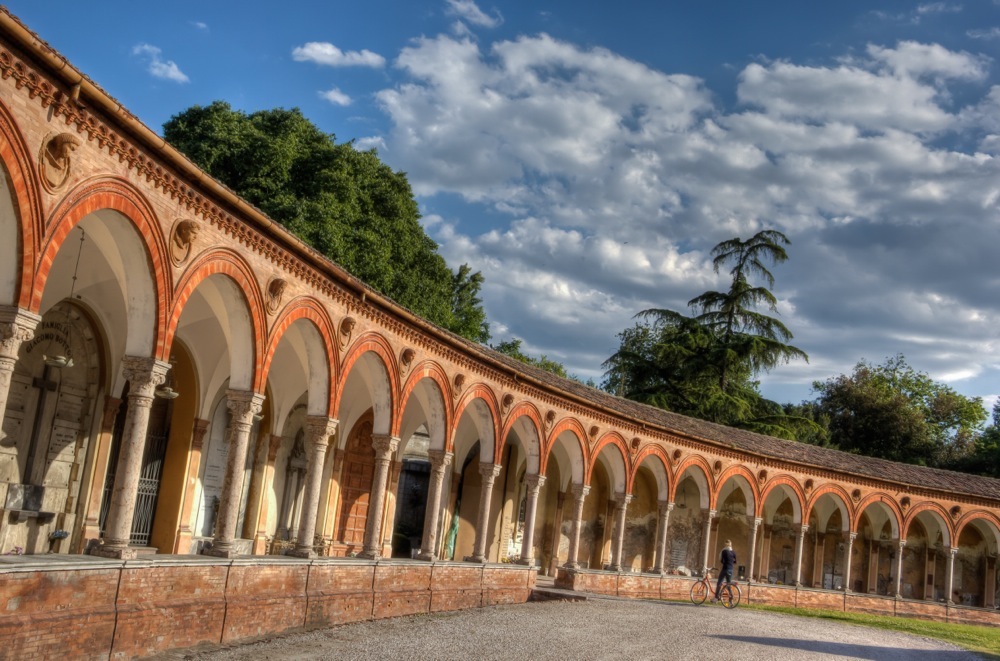



Ferrara is a city located in Emilia-Romagna. It is known for the buildings erected in the Renaissance by the Este, lords of the city, including the Estense Castle, with luxurious rooms, the Palazzo dei Diamanti, home to the National Pinacoteca of Ferrara and characterized by the facade covered in diamond-shaped blocks of marble, and finally the Cathedral of Ferrara, with a Romanesque façade with three spiers and a marble bell tower.

Ferrara is the heir of an important cultural heritage of the Renaissance, a time when it was the capital of an independent duchy under the rule of the Este, and had developed into an artistic and university center of European level, where personalities such as the poets Ludovico Ariosto lived. and Torquato Tasso, the scientists Niccolò Copernico and Paracelso, the artists Andrea Mantegna and Tiziano, the writers Giovanni Pico della Mirandola and Pietro Bembo.

It is also a city of great urban interest as during the Renaissance the first major urban planning projects in modern European history were carried out, the best known of which is the Addizione Erculea, commissioned in 1484 by Duke Ercole I d'Este to the architect Biagio Rossetti.
The new part of the city is called Arianuova, both for its location outside the old axis of the medieval castle, and because it was characterized until the end of the nineteenth century by large green areas without buildings, called "orti and gardens", inside the new mighty Rossettian walls.
Thanks to this architectural work, Ferrara is considered by scholars to be the first modern city in Europe.

UNESCO awarded it the title of World Heritage Site for the first time in 1995 as a city of the Renaissance and subsequently, in 1999, it received further recognition for the Po delta and for the Este delights. Ferrara is also one of the 5 provincial capitals (together with Viterbo, Bergamo, Lucca, Treviso and Grosseto), whose historic center has remained almost completely surrounded by walls which, in turn, have kept their original appearance almost intact over the course of the centuries. Ferrara, with Pisa and Ravenna, is also one of the first cities of silence mentioned in Gabriele D'Annunzio's Laudi.

Ferrara is an ancient university seat (University of Ferrara) and an archbishopric (archdiocese of Ferrara-Comacchio).
It houses important cultural centers: the National Picture Gallery of Palazzo dei Diamanti, the National Archaeological Museum, the Risorgimento and Resistance Museum, the Filippo de Pisis Modern and Contemporary Art Museum, the Cathedral Museum, the Giovanni Boldini Museum, the museum of Italian Judaism and the Shoah and numerous other museums.

The contemporary city rests on an economy based on agricultural and industrial production that make it a center of primary importance thanks to the presence of numerous industrial plants in the petrochemical and small and medium-sized businesses.
The most representative sectors are those of the chemical industry, the metalworking industry, electrical engineering and the textile and food industry.
Furthermore, the road and railway networks insert it within the regional and national commercial circuit thanks to the presence of adequate infrastructures such as the A13 motorway, the freight yard of the railway station and the ports located in Pontelagoscuro that connect the city to the Po river. and the Adriatic Sea.
Ferrara is also one of the few Italian sites where geothermal energy is used for the production of hot water and heat that feeds the city's district heating network.
Ferrara
Address: Castello Estense, 44121
Phone: 0532 299111
Site:
http://www.comune.fe.it/Location inserted by
BBCC